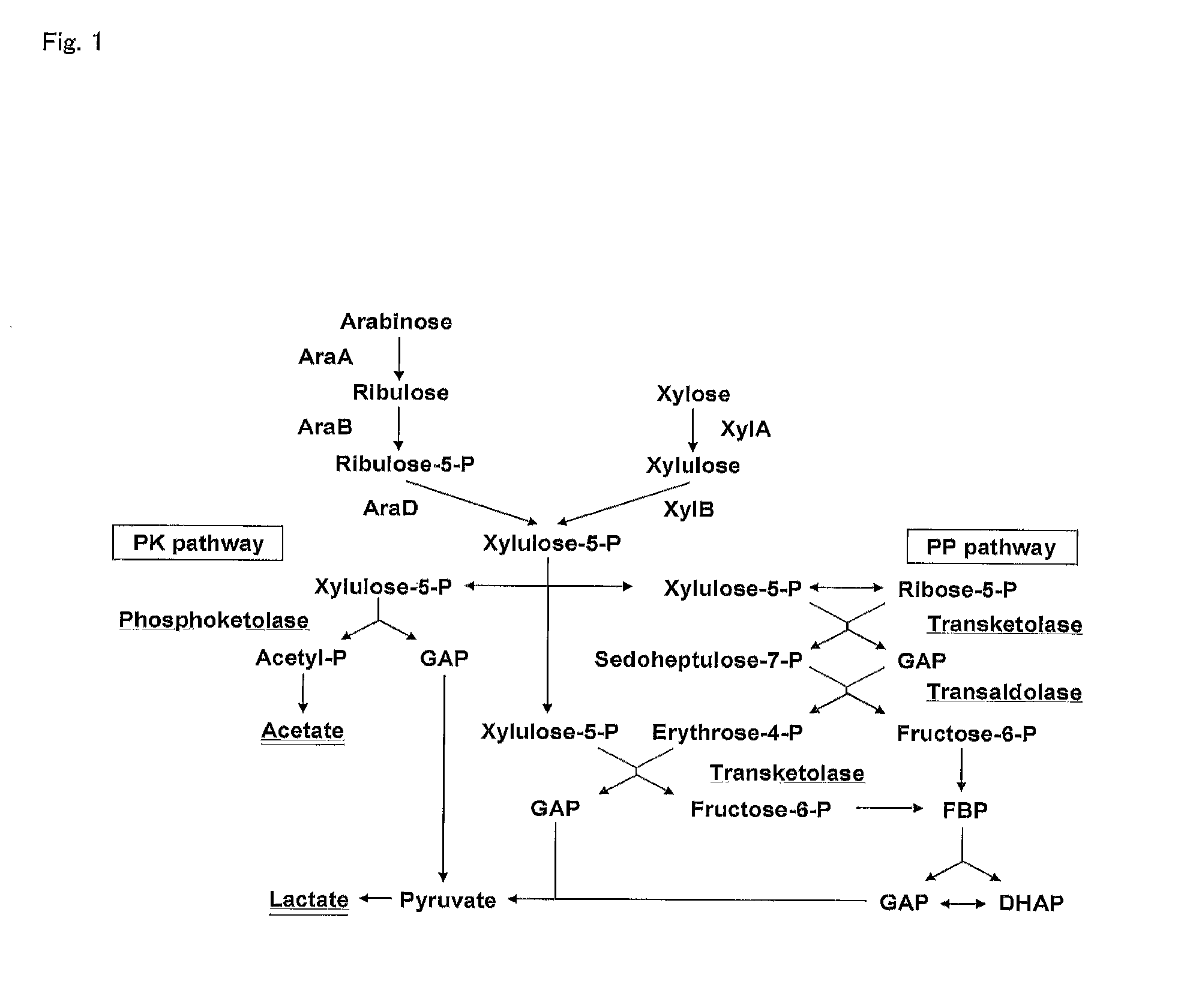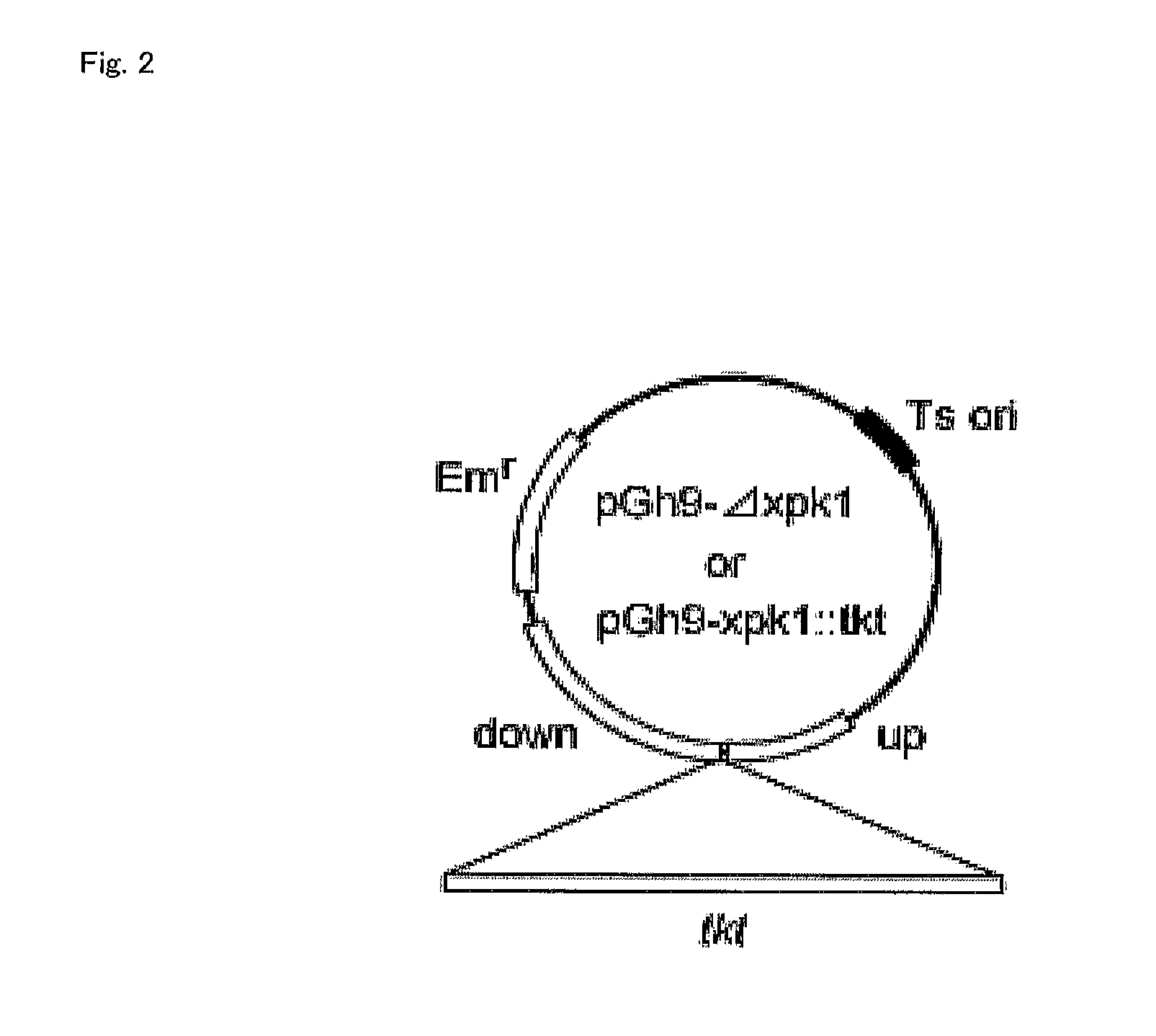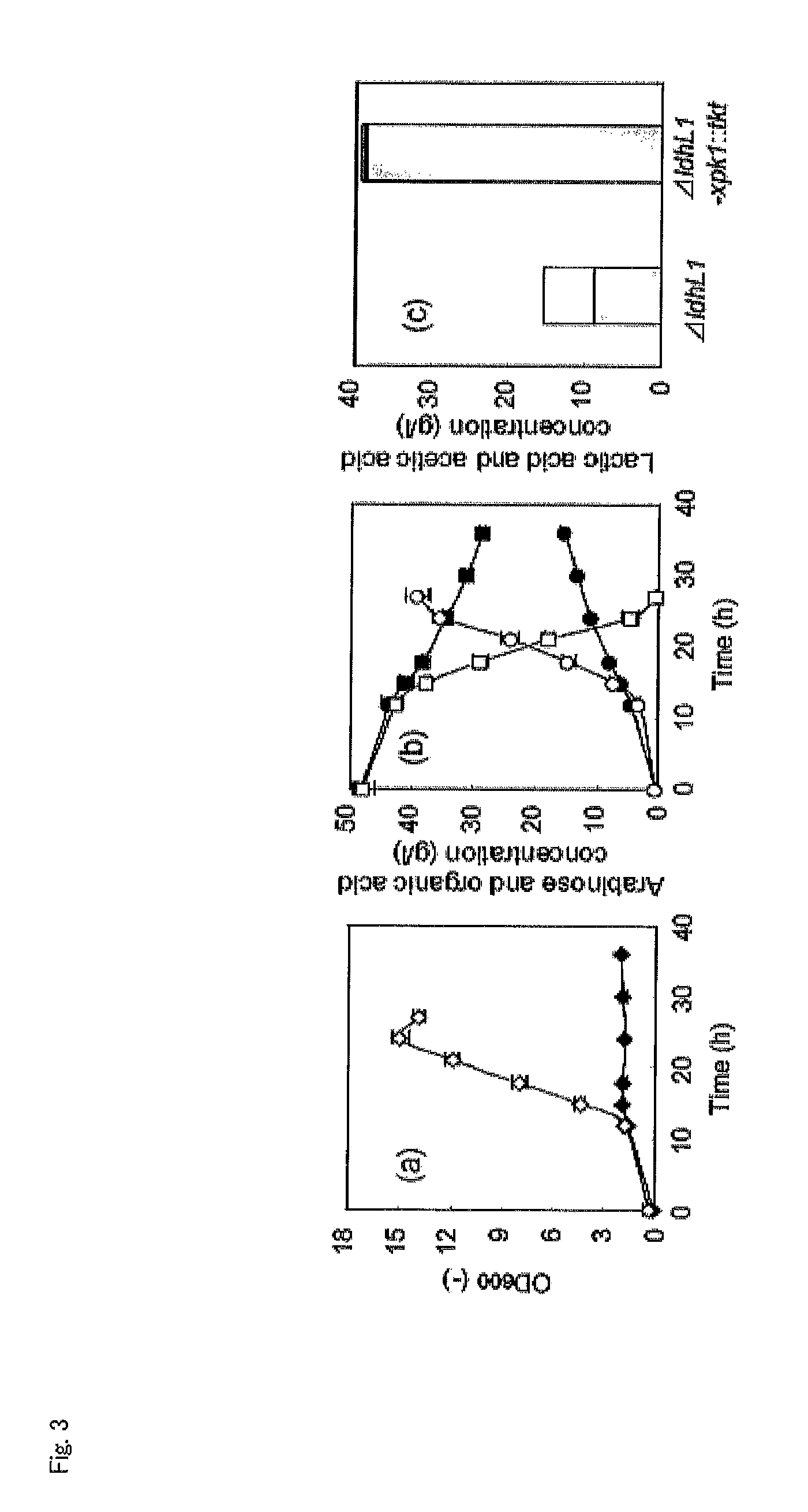Homolactic fermentation from pentose
a technology of lactic acid bacteria and homolactic fermentation, which is applied in the field of lactic acid bacterium can solve the problems of inability to complete homolactic fermentation, no lactic acid bacterium capable of homolactic fermentation from a pentose has been reported, and no report has described the introduction of the pp pathway, etc., and achieves the effect of producing effectiv
- Summary
- Abstract
- Description
- Claims
- Application Information
AI Technical Summary
Benefits of technology
Problems solved by technology
Method used
Image
Examples
example 1
Homolactic Production from Arabinose
[0050](Materials and Methods)
[0051]As a host, the L-lactate dehydrogenase-disrupted strain of Lactobacillus plantarum NCIMB 8826 (Non-Patent Document 7), which produces D-lactic acid with high optical purity, was used. Hereinafter, this L-lactate dehydrogenase-disrupted strain of Lactobacillus plantarum NCIMB 8826 is also referred to simply as a “ΔldhL1 strain.” This strain is by nature capable of utilizing arabinose. The Lactobacillus plantarum ΔldhL1 strain and a modified strain thereof were grown at 37° C. in MRS broth (Difco Laboratories, Detroit, Mich.) or MRS broth containing 25 μg / ml erythromycin. To the medium, 1.5% (w / v) agar was added to produce a solid medium. PCR was carried out using a KOD-Plus-polymerase (Toyobo Co., Ltd.). Escherichia coli VE 7108 (Non-Patent Document 9) was used for gene manipulation of pG+host9 (Non-Patent Document 8) and grown in Luria-Bertani (LB) medium containing 250 μg / ml of erythromycin and 10 μg / ml of kanam...
example 2
Homolactic Acid Production from Xylose
[0067]As hosts, the ΔldhL1, ΔldhL1-Δxpk1 and ΔldhL1-xpk1::tkt strains as prepared in Example 1 were used. The conditions for cultivation of Lactobacillus plantarum cells and PCR were the same as in Example 1. Escherichia coli VE 7108 (Non-Patent Document 9) and Escherichia coli Nova Blue (Novagen, Inc., Madison, Wis.) were used for gene manipulation of pG+host9 (Non-Patent Document 8) and pCU (Non-Patent Document 12), respectively, and grown in Luria-Bertani (LB) medium containing 250 μg / ml of erythromycin and 10 μg / ml of kanamycin and in LB medium containing 250 μg / ml of erythromycin at 37° C., respectively.
[0068](Construction of Plasmids)
[0069]Plasmids for xylose utilization were constructed as follows. The XylAB operon (composed of from the start codon of the xylA gene to the stop codon of the xylB gene) was amplified by PCR from a genome prepared from Lactobacillus pentosus NRIC 1069 (obtained from NRIC) by a conventional method using oligon...
PUM
| Property | Measurement | Unit |
|---|---|---|
| volume | aaaaa | aaaaa |
| concentration | aaaaa | aaaaa |
| temperature | aaaaa | aaaaa |
Abstract
Description
Claims
Application Information
 Login to View More
Login to View More - R&D
- Intellectual Property
- Life Sciences
- Materials
- Tech Scout
- Unparalleled Data Quality
- Higher Quality Content
- 60% Fewer Hallucinations
Browse by: Latest US Patents, China's latest patents, Technical Efficacy Thesaurus, Application Domain, Technology Topic, Popular Technical Reports.
© 2025 PatSnap. All rights reserved.Legal|Privacy policy|Modern Slavery Act Transparency Statement|Sitemap|About US| Contact US: help@patsnap.com



